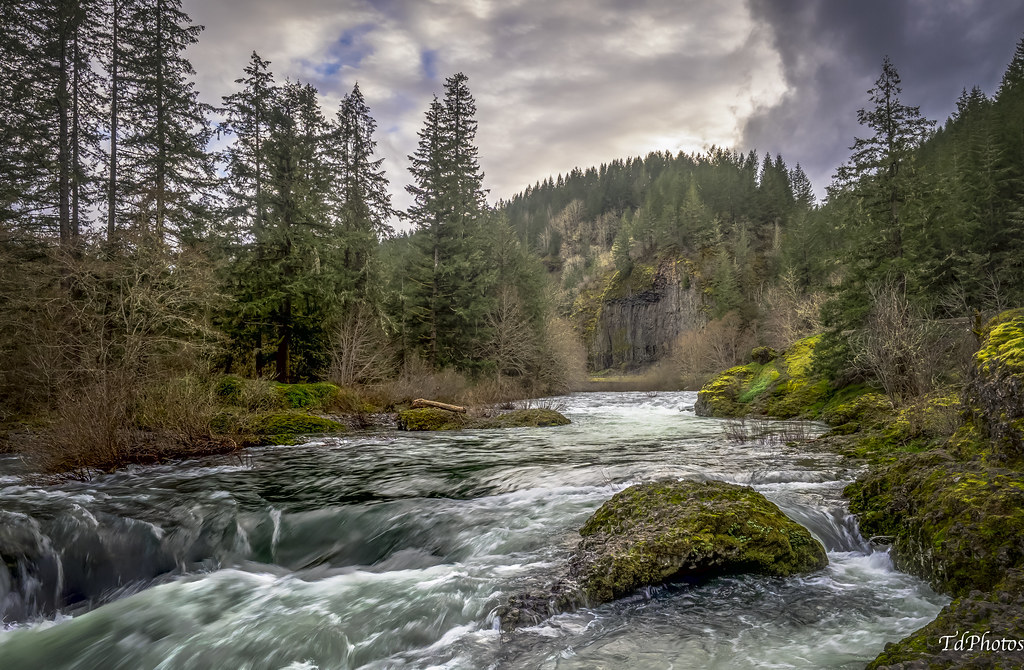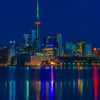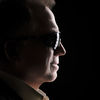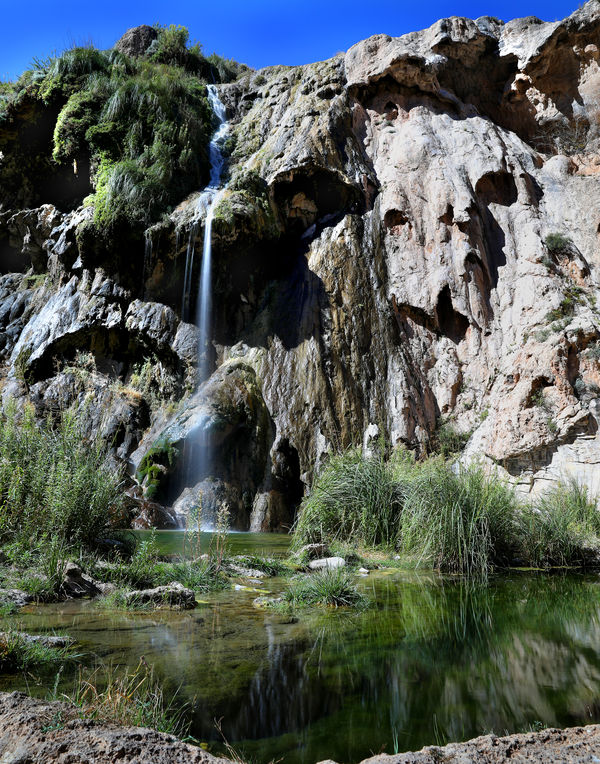Needing help with "silky" water falls.
Mar 30, 2017 00:26:20 #
Chefneil wrote:
Learning time: You say an ND is not good for this shoot. Why? I have never used one before, frankly I have trouble getting enough light in most of my pics. Having said that, Wouldn't an ND help to stop over exposure in the sky, while allowing the shutter speed to be slow enough to cause blur?
As I said, wrongy isn't one you should take photo advice from
http://www.marumi-filter.co.jp/en/product/03/
Mar 30, 2017 01:26:35 #
Racmanaz
Loc: Sunny Tucson!
tdekany wrote:
Beautiful capture tdekany, nice balance in saturation, tone and depth.
Mar 30, 2017 03:23:59 #
Haydon wrote:
In my opinion, the most versatile filter for long ... (show quote)
He really gave you great advise here, and the polarizer will be useful for other landscape images as well. If you avoid bright mid day light and stop down around f11-16, lowest (base) ISO, and using the polarizer will give you slow enough shutter speeds for a good smooth effect on the water. Be careful of turning the polarizer to full effect sometimes as that can cause the water to become too dark with no reflections whatsoever. You mentioned that you were getting over exposures? The long exposures just require the same appropriate combination of aperture, shutter speed, and ISO as regular exposures, and learn to use your histogram for judging exposure, not just looking at the LCD display. You may eventually want to have an ND filter on hand as well for mid day shooting or even longer shutter speeds. Try a 3 to 6 stop ND filter for starters and you may need to focus first then attach the filter.
Mar 30, 2017 03:47:46 #
Ernie Misner wrote:
He really gave you great advise here, and the pola... (show quote)
As you have great advise here as well. I should have mentioned Live-View and monitoring of the histogram. It will give you a frame of reference so you can avoid blown out highlights. FWIW- Careful use also needs to be used with a polarizer at extremes. 24 mm and below on a full frame can cause uneven skies and may not be noticed on review of the cameras LCD. This is where ND's work very well instead.
Mar 30, 2017 04:11:54 #
Racmanaz wrote:
Beautiful capture tdekany, nice balance in saturation, tone and depth.
Thank you Rac!
Mar 30, 2017 05:48:05 #
BobT wrote:
I just can not seem to get this done correctly. So what is a good place to start with camera settings in attempting to achieve this effect? My results are generally severely overexposed.
Consider shooting in mid day with bright conditions?
Thanks
Bob
Consider shooting in mid day with bright conditions?
Thanks
Bob
Don't feel bad. It takes practice. Fortunately, with digital, you don't have to wait to have the film developed.
https://www.dpreview.com/articles/7326096225/how-to-create-silky-waterfalls
http://www.digital-photo-secrets.com/tip/704/how-do-they-do-that-silky-smooth-waterfalls-and-streams/
https://digital-photography-school.com/9-top-tips-for-shooting-waterfalls-creeks-and-streams/
Mar 30, 2017 06:07:45 #
billnikon
Loc: Pennsylvania/Ohio/Florida/Maui/Oregon/Vermont
BobT wrote:
I just can not seem to get this done correctly. So what is a good place to start with camera settings in attempting to achieve this effect? My results are generally severely overexposed.
Consider shooting in mid day with bright conditions?
Thanks
Bob
Consider shooting in mid day with bright conditions?
Thanks
Bob
I use a simple formula. I use a 10 stop Tiffin ND filter. I get my exposure set at 1/30 sec. using aperture and ISO to get that exposure. Then I attach my 10 stop filter and use my current f stop and iso but go to manual and set my exposure at 30 seconds. My water is pure silk. Make sure to also change your lens auto focus to manual and cover up your eyepiece before making your exposure. Silk is on it's way. PS. Use a very sturdy tripod.
Mar 30, 2017 07:35:08 #
You need slow shutter speeds, generally more than 1/2", a stopped down aperture, a tripod for sure and a good quality ND filter will help in bright conditions.
Mar 30, 2017 07:52:04 #
Jeffcs
Loc: Myrtle Beach South Carolina
The one thing no one suggested is meter the water than shoot from there
When you are trying to get silk water even properly exposed will have a tendency to have an overexposed look
Also using a tripod shoot one shot for the water and one for the landscape than in PS merge to one photo
When you are trying to get silk water even properly exposed will have a tendency to have an overexposed look
Also using a tripod shoot one shot for the water and one for the landscape than in PS merge to one photo
Mar 30, 2017 08:21:39 #
I saw an article where instead of using a slow shutter, they stacked several photos and made a composite with the same effect.
Mar 30, 2017 08:48:54 #
BobT wrote:
I just can not seem to get this done correctly. So what is a good place to start with camera settings in attempting to achieve this effect? My results are generally severely overexposed.
Consider shooting in mid day with bright conditions?
Thanks
Bob
Consider shooting in mid day with bright conditions?
Thanks
Bob
I use a neutral density filter and slow shutter speeds. (NOTE: you may not need the filter if the waterfall is NOT in bright sunlight but it helps lower the shutter speed). I also use the lowest ISO and as small of an aperture as I can get away with keeping the DOF where I want it. Yes it is a balancing act but then that is what all of photography is. You (the photographer) choose the settings to get the best balance for what you want in the picture. Sometimes you have to choose between depth of field and other choices to get the shot you are hoping for. Other times, you take what you can get and hope you can fix it in post.
Mar 30, 2017 08:56:08 #
I've made a large series of photos of mountain streams and cascades with long exposures. The way I handle the dynamic range is to shoot on cloudy days or when the entire area is in the shade. Neutral density filters reduce the amount of light reaching the sensor to give the needed long exposures. If you can't focus through the neutral density filter, mount your camera on your (sturdy) tripod, compose, and focus before you put the ND filter on your lens. Ditto on the previous comments about avoiding vibration when using long shutter speeds.
Mar 30, 2017 09:04:39 #
Fuzzycoach wrote:
Under bright conditions you will need to buy a neutral density filter.....Shooting in the shade or early morning or late evening light you can achieve this fairly easy without any filters.......Here is a early morning shot that is one of my favorites... was shot at sunrise ISO 50, f/20, 1/5 sec
That's a beautiful image Coach
Mar 30, 2017 09:06:23 #
tdekany wrote:
As I said, wrongy isn't one you should take photo advice from
http://www.marumi-filter.co.jp/en/product/03/
http://www.marumi-filter.co.jp/en/product/03/
Surly as he is, I have read used his advise to my benefit.
Mar 30, 2017 09:06:53 #
I shot this a ISO 50, F14, 1/6 sec. with a B+W polarizer at mid-day. If I can't get the shutter slow enough I use Lee ND filters. I have not seen any color shift with these filters. Might have to pop the filter off to focus, but that is a simple procedure that only takes a second. Second is mid-day ISO 100, .6 Sec. f11, 3 stop ND.
If you want to reply, then register here. Registration is free and your account is created instantly, so you can post right away.












